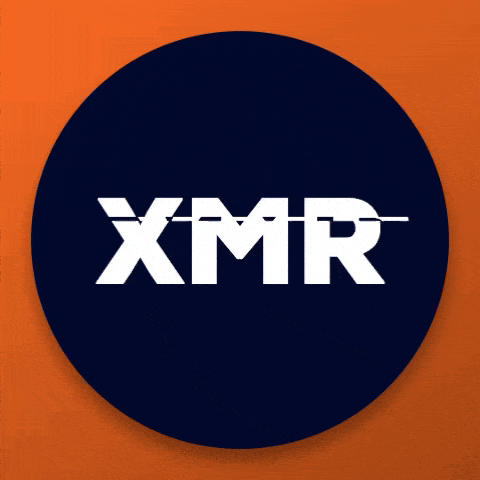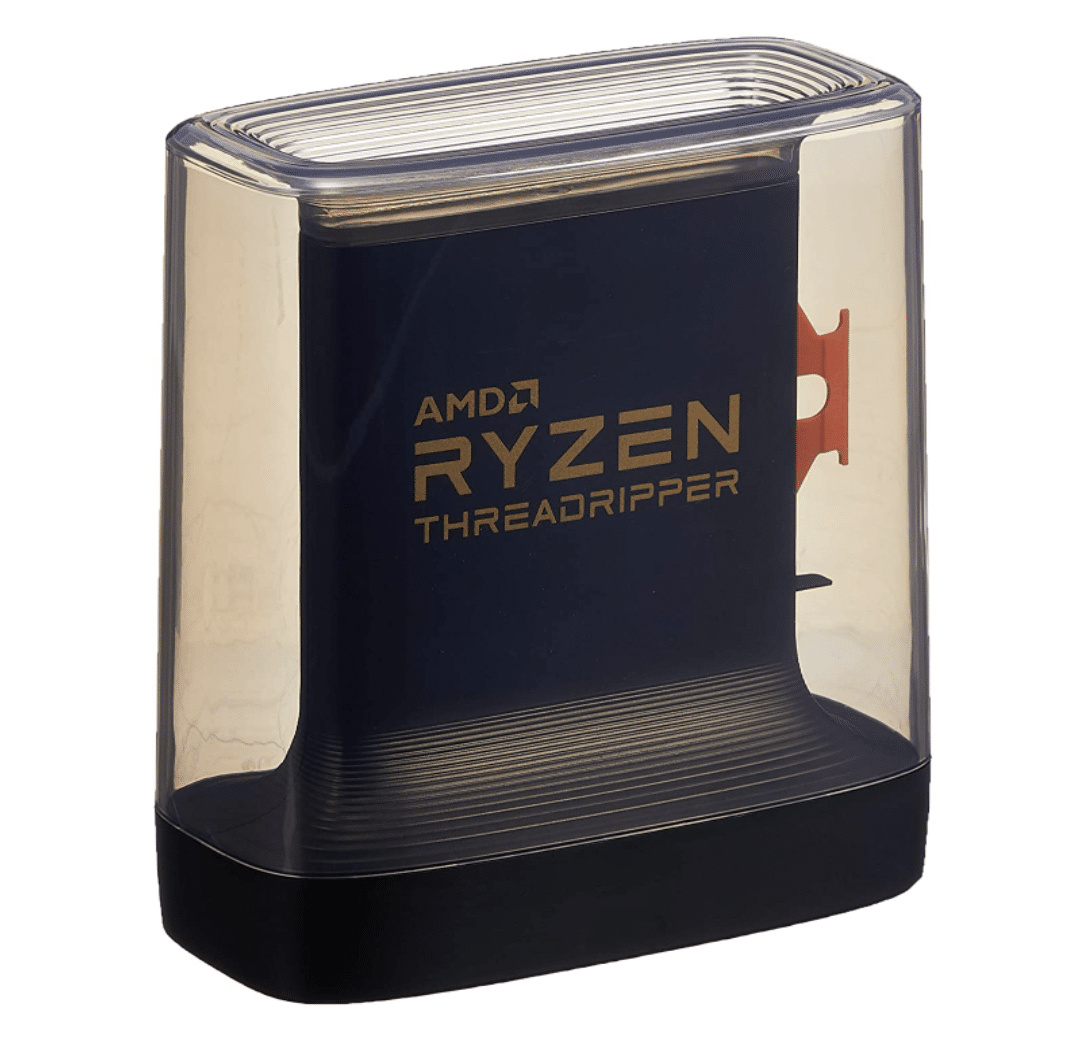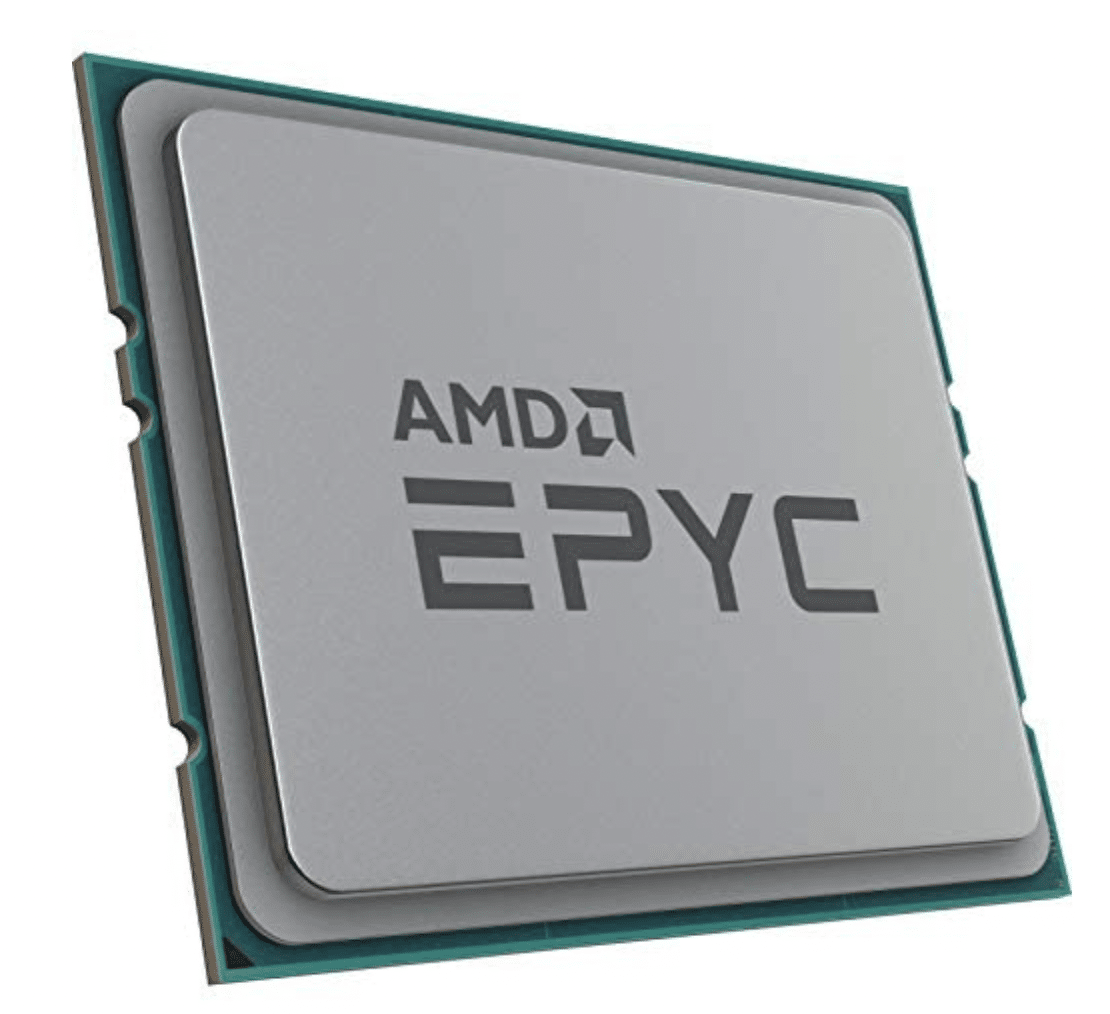intermediate
To many crypto enthusiasts, Monero is the synonym for privacy.
Monero (XMR) is an open-source, decentralized cryptocurrency that was created in April 2014. This crypto has the third-largest developer community among cryptocurrencies. Why is it so popular? Because of its privacy features.
The XMR coin’s obscuring cryptography methods include ring signatures, zero-knowledge proofs, “stealth addresses,” and IP address anonymity to obfuscate transaction details. No one other than the users involved in the trade of XMR can decipher addresses, transaction amounts, address balances, or transaction histories. Monero has as many privacy-enhancing technologies as there are Skittles in the bag.
Monero has been ranked as one of the best performing cryptocurrencies by market capitalization through the years, and one of the coolest things about it is that you can mine it.
There are several other ways to obtain XMR — you can either exchange your crypto to Monero or buy XMR at an exchange… But that’s a bit boring. How about mining XMR like a passionate blockchain geek? We’ve investigated Monero mining hardware options to provide you with the best ones.
How to Mine Monero?
Put down your pickaxe and lantern — you won’t need them. Just like any other crypto mining, Monero mining requires proper software and hardware. So, that means you need a PC and a few special programs. Here is a simple checklist before you start mining XMR:
- a PC with a reliable Internet connection;
- Monero mining hardware;
- Monero mining software;
- a Monero mining pool (in case you don’t want to mine XMR solo);
- a Monero wallet.
Let’s go over the checklist and explain what’s what.
Mining Monero does not require special equipment. Moreover, any operating system within your PC will do, be it Windows, macOS, Linux, or Android.
Monero mining hardware helps your computer not to fry its brains. No matter how many FPS you have in a game, mining is just not in the same league as Witcher 3. You need a powerful processor. A powerful graphics card is not that important, but it also wouldn’t hurt. We will help you choose the best hardware for your PC down below.
Monero mining software is a program created for the single purpose of helping you deal with all the arithmetics that mining involves.
Joining a mining pool means cooperating with other cryptocurrency miners. Because more computers equal computational resources, mining pools increase the probability of successful mining.
A Monero wallet is a place where you store coins. Cold wallets like Trezor, Ledger, and BC Vault could be the most secure options.
Do you have all the things mentioned above? If yes, then you can start mining anytime.
What Is Monero (XMR) Mining?
Before we proceed, let’s once and for all define Monero mining and explain what it means.
Monero requires digital mining to keep its network running and enable its security. But let’s backtrack a bit to understand why it needs it. Unlike traditional money, cryptocurrencies do not have an issuing authority (like the U.S. Federal Reserve), nor do they require banks or other institutions to keep records of transfers of value.

This is instead achieved through Monero miners. They act as the administrators and supervisors of the Monero network and validate all transactions within the network. Validated transactions are recorded in digital files called blocks. Yes, just like LEGO. The blocks are created by the PoW method (Proof-of-Work), where Monero miners have to solve complex puzzles. If Monero miners can solve them, they get the right to append the block to the network and receive block rewards in the form of newly created XMR coins.
To put it simply, mining is like Minecraft, but you have to solve a problem to get through each block.
Steps to Start Mining Monero
How to mine XMR? Now that you have a good understanding of Monero mining, the next logical step is to start your own XMR mining adventure.
After the computer and all the other hardware is ready, all you have to do is install the mining software and connect to a mining pool. You need to install mining software that coordinates your processor with the algorithm.
Join a mining pool or run the solo miner by double-clicking on it. Don’t forget to register within the program if needed. The program should start Monero mining right away.
Monitor the results of Monero mining and transfer coins to your wallet.
Ways to Mine Monero
One of the easiest ways to begin your journey is XMR mining with a PC processor. There’s no need to purchase additional equipment: as a rule, a computer in its standard configuration is sufficient.
Here is how to mine Monero with a CPU (central processing unit) or GPU (graphics processing unit):
1. Open a cryptocurrency wallet.
2. Install cryptocurrency mining software, like XMRig.
Members of the crypto community warn that many antivirus programs react negatively to XMRig. In some cases, you will need to add the software to the antivirus exclusion list.
3. Add your wallet address and start mining.
If everything in this article sounds too complicated and you’re on the verge of despair (and manly tears), choose this way to mine.
Not every user wants to give up their PC to earn cryptocurrency. Preparation (e.g., purchasing the hardware and installation) is often tedious and too complicated. Many users are looking for profitable alternatives to classic mining.
With cloud mining, users can get started immediately without having to wait for a long time or to invest in expensive hardware. The high electricity costs or the question of cooling are not relevant because the users simply rent the required computing power to secure the reward.
Best Monero (XMR) Mining Hardware
How to start mining Monero? Get ready to buy hardware. Most aspiring cryptocurrency miners believe that a mining rig is a massive pile of racks of high-performance GPUs. It’s not always like that. Although graphics cards are significantly better than processors at some tasks, this does not mean that processors cannot be used profitably for mining. Let’s take a look at the best-performing hardware, according to the 2022 ratings.
What Hardware Do You Need to Mine Monero?
How to mine Monero on PC? You’ll need the best hardware, but that’s not all. Make sure to use a suitable power adapter. Since mining hardware usually operates around the clock, a high-quality power supply ensures greater security. Invest a little more money to avoid overheating and a possible blue screen of death.
While the cost of processors plays a role in your finances, there are a few other factors. Besides the CPU, you need to get a compatible motherboard, enough RAM, a power supply, a hard drive, and other parts like monitors and keyboards to build the whole machine.
And then, there are electricity rates. The machines, of course, require power, as do their cooling systems. You need to keep an eye on local electricity tariffs. If you live in a warmer climate, you may also require additional cooling.
Most likely, you will join a mining pool to mine XMR successfully. If you do that, you also need to factor in the cost of membership.
Best CPU Miner for Monero
We couldn’t choose one, so we present three:

AMD Threadripper 3990X
- Hashrate: 40 kH/s
- Power Draw: 280W
- Processing Threads: 128 threads
- Cost: ~ $5,000
In Monero mining, AMD Threadripper 3990X is an absolute godsend. Unfortunately, it’s very expensive, but it’s also worth it when used right. With 64 cores and 128 threads, Threadripper 3990X can provide hash rates from 43 to 64 kH/s using the XMRig 6.3.5 algorithm (as stated on monerobenchmarks.info).

AMD Threadripper 3960X
- Hashrate: 23 kH/s
- Power Draw: 280W
- Processing Threads: 48 threads
- Cost: ~ $2,000
If Threadripper 3990X is too expensive and you want something cheaper to mine Monero, Threadripper 3960X is a perfect choice. This sub-$1,500 workstation processor has 24 cores and 48 threads and offers significantly better value than its more powerful brother, Threadripper 3970X.

AMD EPYC 7742
- Hashrate: 29 kH/s
- Power Draw: 225W
- Processing Threads: 128 threads
- Cost: ~ $1,500
AMD EPYC is one of the most powerful server processors to mine Monero with a CPU. When mining Monero, it achieves a hash rate of 44,000 hashes/second with a power consumption of 225 watts. This makes AMD EPYC 7742 one of the fastest processors for Monero mining. However, it can also cost a lot; the starting price on some websites is 7,500 euros.
How to mine Monero with a CPU if you lack money? If you’re on a budget, Intel Xeon E5-2670 V3 might be a better option. The processor delivers 11.4 kH/s, which is significantly slower than EPYC. However, this is a discontinued product that you can buy cheaply, and it still does the job.
What CPU Is Best for Monero Mining?
How to mine Monero with a CPU effectively? When it comes to mining Monero and other cryptocurrencies, CPUs and GPUs have a lot in common. However, compared to graphics cards, processors are much more sensitive to RAM quality, power consumption, and mining software optimization. Workstation CPUs are the best choice for mining, but they cost a lot of money. On the other hand, regular processors can offer a decent hash rate, but they must have as many cores as possible. When choosing the best hardware, your best bet is to plan your budget and read the latest overviews of the market. Some prefer Monero GPU mining, and some stick to Monero CPU mining. Experience shapes preferences.
Best GPU Miner for Monero
NVIDIA TITAN RTX
- Hashrate: 17 kH/s
- Power Draw: 185W
- Cost: ~ $2,800
AMD RADEON VII
- Hashrate: 17 kH/s
- Power Draw: 280W
- Cost: ~ $2,000
ASUS STRIX RTX 2080TI
- Hashrate: 14 kH/s
- Power Draw: 150W
- Cost: ~ $1,300
AMD RADEON Vega 64
- Hashrate: 11 kH/s
- Power Draw: 195W
- Cost: ~ $700
1080TI KINGPIN GPU 2012MHZ
- Hashrate: 11 kH/s
- Power Draw: 260W
- Cost: ~ $1,600
What GPU Is Best for Monero Mining?
You can see from the performance data that being expensive does not always equal being better. You should pay attention to power consumption as it plays a vital role in calculating profit.
Monero Mining Profitability
According to Coingecko, you get around 0.003 Monero per day, which is 0.075 Monero per month. If you want to start trading immediately, buy or swap XMR on the Changelly platform with no hidden fees.
Of course, you have to deduct the electricity costs that your computer needs to calculate the cryptocurrency from this value. To find out the electricity consumption rate, it is best to use an ammeter, which you can buy for a hefty price on eBay. All in all, when it comes to analytics, Monero mining profitability didn’t disappoint in 2021.
Is mining Monero with a GPU profitable?
In contrast to Bitcoin, the number of Monero coins you can mine is not limited. The continuous adjustment of the difficulty and the proof-of-work procedures ensure the necessary stability and anonymity in the Monero mining community system.
Is Monero mining profitable? Mining Monero with GPUs can bring you a hefty sum as long as you monitor your electricity consumption.
You can always check mining profitability via any mining calculator.
Best Monero Mining Software
If you are looking for the right XMR mining software to mine the cryptocurrency, here are some equally interesting options:
- XMRig Minеr. It’s free, supports 32-bit and 64-bit рrосеѕѕоrѕ, and provides autоmаtiс ѕеttingѕ. However, it’s known for its increased power drаw.
- XMR-Stak mining software supports both CPUs and GPUs. This software iѕ еаѕу tо uѕе with no nееd tо еdit thе соnfigurаtiоn file for you to start mining.
- Monero Spelunker. Rumor has it that this software is considered one of the best Windows mining software for Monero (XMR).
- Cudo Minеr. This software has a large community and multi-fасtоr аuthеntiсаtiоn that enhances security.
- Claymore. The software is famous for its higher performance and regularly updated code.
Software can be installed on either Windows, Linux, or macOS. MacOS, characterized by an uncomplicated installation, turns out to be a plug-and-play variant. Windows is also recommended for beginners. Linux is a bit more complicated as this operating system requires preliminary work.
Best Monero Mining Wallets in 2022
Just like in the case of Bitcoin or other coins and tokens, you also need a wallet for Monero.
The digital wallets are protected against attacks from outside by different methods — and that’s a good thing because there are always reports of large amounts of stolen cryptocurrencies.
Unlike well-known currencies, such as Bitcoin or TRX, there are significantly fewer options for Monero when it comes to choosing a suitable wallet. However, one should not forget that Monero has advantages in terms of security compared to the currencies mentioned above. It’s best to choose hardware wallets when you can help it because they are considered the most secure.
- Ledger Nano S is one of the best hardware wallets on the market.
- MyMonero Wallet is a mining software that is available for all common PC operating systems. The wallet was developed by a member of the Monero team.
- XMR Wallet is one of the most popular mobile digital wallets on Google Play. It features 2-factor authentication, PIN code, and fingerprint login.
Best Monero Mining Pools
According to PoolWatch.io, these are the best mining pools for Monero:
- The Mine XMR mining pool can be used without any registration. All you have to do to request a payout or call up the statistics is enter your Monero address.
- NanoPool allows users to mine several digital coins, including XMR. You can mine Monero both with your CPU and GPU.
- MoneroOcean makes it possible to mine Monero or even more profitable coins but still get payments in XMR.
- SupportXMR is the best Monero miner when it comes to community.
- DwarfPool is suitable for beginners with medium power equipment. An obvious advantage of DwarfPool is the lack of mandatory registration.
Is mining Monero profitable within a Monero mining pool? Mining pools allow people from all over the world to pool their computing power and act as a single, distributed computer. This significantly increases members’ chances of successfully solving the Monero mining pool puzzles and receiving block rewards. Miners receive a share of the block rewards according to their share of the pool’s hash power.
There are also different payout models used by various Monero mining pools, which can complicate your winnings or increase your risks:
- Pay Per Shares (PPS): Pools pay out a set profit according to your pool share, regardless of whether blocks are successfully mined. While this approach offers guaranteed payouts, you lose rights to individual block rewards and transaction fees.
- Full Pay Per Shares (FPPS): This is practically the same as PPS, but with the added benefit that participants also earn transaction fees. The payouts are lower than in the case of PPS, and that’s what you need to consider before joining a pool.
- Pay Per Last N Shares (PPLNS): The pools shift almost all risks to the participants and only share the generated block rewards. The stakes are much higher, but so are the rewards.
FAQ
Have a question about Monero mining? We got you covered.
How much XMR can I mine in a day?
The final results depend on your hardware. According to CoinWarz, 0.00661356 Monero can be mined per day with a Monero mining hash rate of 42,000.00 H/s, a block reward of 0.65 XMR, and a Monero difficulty of 356,648,856,370.00. Is Monero worth mining with these stats? Definitely!
What is a good hash rate for Monero mining?
It’s important to be aware of the hash rate of one Monero mining machine. The average hash rate is about 500H/s, with fluctuation from 300H/s to 700H/s. It’s a good stable hash rate, plus you save your CPU from getting fried.
Can I mine Monero on my phone?
Yes, you can actually use your smartphone for crypto mining. Some XMR miners think it’s the best way to mine Monero. Some of the most popular apps are Crypto Miner and Flux XMR Cloud Miner. Mobile apps use a smartphone’s CPU power to mine.
How long does it take to mine 1 Monero?
It’s much faster than with Bitcoin. It takes about 2 minutes of waiting time for the next block to be mined, then 2 minutes for the first block to be confirmed, and about 20 minutes for the transaction to be finished.
What is the most profitable crypto to mine?
Bitcoin is the priciest and most profitable when it comes to “mainstream” crypto. But what about altcoins? Monero, based on a proof-of-work hashing algorithm known as RandomX, is regularly recognized not only as the most advanced privacy coin but also as a profitable cryptocurrency to mine. Mining Monero on a PC is relatively easy.
Disclaimer: Please note that the contents of this article are not financial or investing advice. The information provided in this article is the author’s opinion only and should not be considered as offering trading or investing recommendations. We do not make any warranties about the completeness, reliability and accuracy of this information. The cryptocurrency market suffers from high volatility and occasional arbitrary movements. Any investor, trader, or regular crypto users should research multiple viewpoints and be familiar with all local regulations before committing to an investment.

